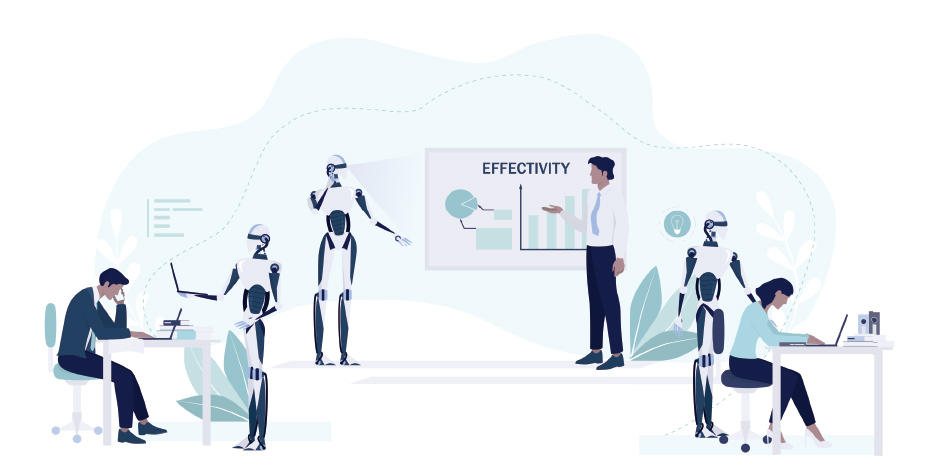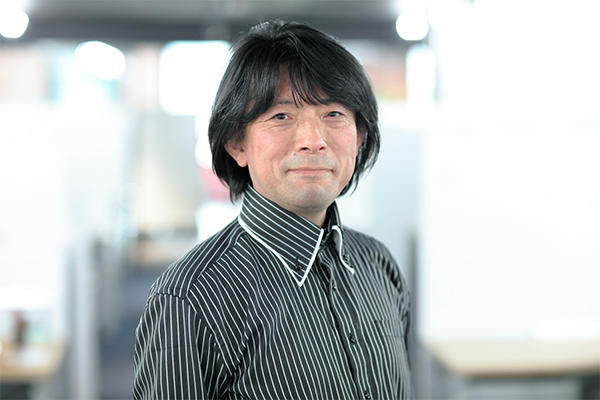
The topic of AI is making headlines in the general media and business journals every day. For example, "AI will take away human jobs," "AI will streamline the diagnosis of diseases," "AI will help children learn," and so on, all with their mixed disadvantages and advantages. Artificial Intelligence (AI) literally means "intelligence that is created artificially", but the reality of the term is vague and many people may not be familiar with it.
To help dispel such doubts, Dr. Satoshi Kurihara, Technical consultant, OMRON SINIC X Corporation, takes an overview of the current state and future development of AI.
 Dr. Satoshi Kurihara
Dr. Satoshi KuriharaFirst of all, it is clear that AI will be an indispensable part of the next generation information society. It will play a major role just like IT (information technology) and IoT (Internet of Things), and the importance of AI will increase if those technologies work together.
In addition, the following elements required for the society of the future cannot be handled by human beings alone in the midst of the intersection of diverse information. A few of the more familiar elements include "cyber security" to ensure safety in the digital space, "support for the vulnerable and inadequate workforce" in an aging society with low birthrates, and "building a resilient social infrastructure" that can withstand disasters and problems caused by aging infrastructure.
In today's society, even though digital technology is used, in many cases people are actually accessing, analyzing and using the information by themselves. For example, driving with a car navigation system or a factory where robots are manufacturing under human control and management.
The AI used in these tasks and processes is positioned as "tool-type AI" that humans use it as a tool. This type of AI often uses machine learning to analyze a large amount of information loaded for a specific purpose or application, to derive features and rules, and then to process new data based on that analysis.
In contrast, the AI we should be realizing is one that analyzes big data collected from physical (real) space through sensors and IoT devices at the edge (meaning "on-device") or in the cloud, and then feeds back high value-added information and processing to physical space again. This means that AI needs to live in harmony with us in physical space. To achieve this, AI must have the autonomy and versatility to think for itself and respond to a variety of situations. For example, "self-driving cars" with a high degree of autonomy, "fully automated production" that is based on demand forecasts but can also respond to dynamic changes in circumstances, and "AI that provides a high degree of support for human decision-making" (e.g., advising doctors on the results of diagnoses) will be realized through such "autonomous and general-purpose AI".
Existing AI is ubiquitous, with the ability to communicate with anyone, anywhere, anytime, for example, as seen in the case of smart speakers. But from now on, it will become more "ambient type", symbolized by the phrase "Because it's now, because it's here, because it's you," which means that it will be able to stay close to people without making them feel that they are there, while actively functioning as needed.
The clue to interacting with AI, which seems most natural to humans, lies in human-to-human communication. For example, if an industrial robot working in a factory, etc., were to be introduced directly into our lives, we would feel as if heavy construction machinery were moving in our homes or offices. Rather, the ideal is to be able to interact with the AI of the future without feeling uncomfortable, just like a typical conversation with a family member or an exchange of ideas with a colleague in a meeting. And just like a thoughtful partner, AI should be able to be attentive to detail and express rich emotions, and be able to read the atmosphere and offer hints and suggestions.
Of course, it's not an easy process, because humans and AI are fundamentally different in the way they interact with information at this moment. In other words, humans set their own goals, and if there is information that is lacking in achieving those goals, they will go get it, but today's AI does not have that kind of information craving. The current situation is that humans prepare the data and new information they think they need, and let the AI learn.
In this regard, the latest directions in AI development are to give the AI the ability to set objectives, plan for them, and gather the knowledge needed to realize them. It then evaluates the results of its actions and dialogues in physical space based on these objectives and capabilities, and establishes a feedback loop to the objectives again. If we can create this kind of AI, it will make it possible for humans and AI to live in harmony and cooperate with each other to create a new future.
AI has gone through two winters in the past, with big booms and disappointments. And this third boom started with a vague sense of expectation in Japan about five years ago, when it began to gain momentum in academia and industry. At that time, there were many companies trying to keep up with the trend.
The boom has been driven by the promotion of the use of big data, improvements in the performance of graphics processing units (GPUs) for image processing and their application to AI processing, and the development of deep learning to advance the learning capabilities of AI, which has led to the discovery of more realistic applications for it. AI is now being used effectively in areas such as face recognition, anomaly detection, pattern recognition, and automatic identification, and people are beginning to recognize that the true nature of AI, which had previously been a blur, is the aforementioned "machine learning".
However, now that we've settled down, there is a sense of stagnation, as if the festivities have come to an end. Despite the huge investments being made, if they don't produce results, it could be that AI will once again disappear from the scene.
But, unlike the last two booms, which were preceded by technological interest, this time around, the race to develop it is based on the knowledge that it has practical applications. As a result, it is increasingly likely that AI will not disappear from the stage in the future, but will become the norm, and in fact, we will see AI that is more closely aligned with us.
For actual business success, it is essential to establish close cooperation between R&D and the application field, and to plan a co-evolutionary problem-solving method in which the AI created in basic research and R&D is tested in the field and evolves through a cycle of immediate feedback.
From this perspective, what is needed is a coordinator-like person who can act as a link between development and the application field to ensure smooth communication and coordination, and a management team that understands the characteristics of AI development and can drive the project forward with strong conviction and patience while making decisions quickly.
Now, the autonomous and general-purpose AI that will emerge in the future will be built as an autonomous, decentralized architecture, similar to an organism that is highly responsive and resistant to changes in circumstances and environment. On the other hand, humans will be able to help AI and maximize its capabilities by supplementing it with capabilities in areas that AI cannot follow. Specifically, covering such things as empathy, creativity, the ability to understand contexts that connect scattered information, and the ability to form networks between people will bring us closer to realizing a society in which humans and AI coexist in harmony. In doing so, it is necessary for companies to successfully develop "autonomous and general-purpose" AI by balancing a bottom-up approach from the field with top-down management from the management team.